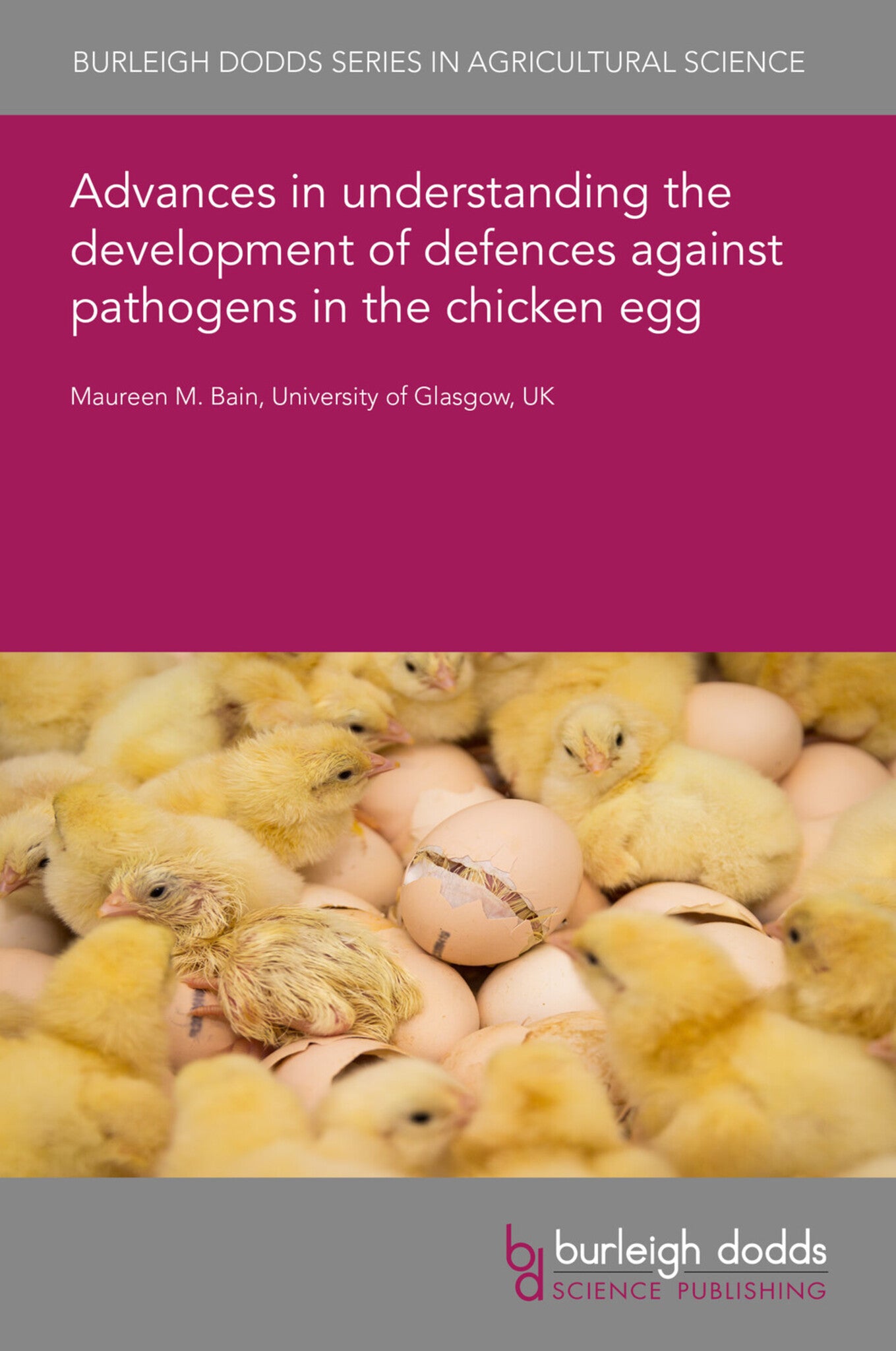We're sorry. An error has occurred
Please cancel or retry.
Advances in understanding the development of defences against pathogens in the chicken egg

Some error occured while loading the Quick View. Please close the Quick View and try reloading the page.
Couldn't load pickup availability
- Format:
-
29 May 2023

The egg is naturally equipped with a range of natural defences that protect the embryo from bacterial contamination throughout its development. Starting with a reminder of how the egg forms, this chapter aims to provide the reader with an overview of how the different components of the egg contribute to this natural defence with a special focus on the cuticle (case study). A summary of our current understanding of antimicrobial proteins and peptides which could contribute to the eggs defence is also provided. During storage and incubation, the eggs natural defences are gradually eroded as the embryo assimilates nutrients, and water vapor and gases are exchanged across the shell. The shell also undergoes dissolution to release calcium for skeletal development. The final section of this chapter is therefore devoted to considering recent work that has highlighted the potential protective role of the chorioallantoic membrane during the second stage of incubation.

TECHNOLOGY & ENGINEERING / Agriculture / Animal Husbandry, Poultry farming, TECHNOLOGY & ENGINEERING / Agriculture / Sustainable Agriculture, Sustainable agriculture, Agricultural science

- 1 Introduction
- 2 Basic components of the egg
- 3 Formation of the egg: key events
- 4 Antimicrobial molecules associated with the egg and their mechanisms of action
- 5 Contribution made by each component of the egg to the egg's defence
- 6 Embryo-derived structures involved in the egg's defence
- 7 Conclusion
- 8 Where to look for further information
- 9 References



